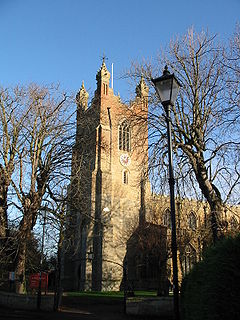Cottenham
| Cottenham | |
|---|---|
 All Saints' Church, Cottenham |
|
| Cottenham shown within Cambridgeshire | |
| Population | 6,095 (2011) |
| OS grid reference | TL450675 |
| District | |
| Shire county | |
| Region | |
| Country | England |
| Sovereign state | United Kingdom |
| Post town | CAMBRIDGE |
| Postcode district | CB24 |
| Dialling code | 01954 |
| Police | Cambridgeshire |
| Fire | Cambridgeshire |
| Ambulance | East of England |
| EU Parliament | East of England |
| UK Parliament | |
Cottenham is a village in Cambridgeshire, England. It is close to The Fens. The population of the civil parish at the 2011 Census was 6,095. Before the fens were drained in the 19th century Cottenham was on the last contour before the waterlogged marshes, with Ely being the nearest dry land around 12 miles (19 km) to the north-east.
The village of Cottenham fell victim to a great many fires over the centuries. One, on 29 April 1676, destroyed over a hundred houses, and killed at least one person.
That which occurred on 4 April 1850 is referred to as the "great fire". Starting in the High Street around 8:30 in the evening, the flames spread rapidly and though there was no loss of human life "a vast quantity of poultry and pigeons and a good many pigs were destroyed." Forty to fifty cottages burnt down as well as the Black Horse and White Horse inns and the Wesleyan Chapel which was housed in a barn on what is now Telegraph Street.
The arsonist was believed to be one William Hayward, who was lodging at the Lamb Inn whilst doing casual labour for Thomas Graves on the boundary of whose property the fire had started. The landlord of the Lamb was quick to report that Hayward had said to him "I have been a match for old Graves ... damn and blast the fire: I wish it would burn half Cottenham down." Suspicions were fuelled the morning after the fire when the landlord woke to discover Hayward had left town. A rather trumped up case was brought against Hayward for referral to the coming assizes but, presumably for want of hard evidence, the bill was ignored by the Grand Jury.
Archaeological sites of interest within the parish include a stretch of the Roman canal Car Dyke.
A trench excavated by the ACA team from the University of Cambridge, under the supervision of Gary Marriner, discovered evidence of Neolithic occupation in the village.
Bullocks Haste is believed to be the remains of a significant Romano-British settlement, thought to have been a major port and possibly an administrative and religious centre. The course of the Car Dyke also passes through this site.
...
Wikipedia

